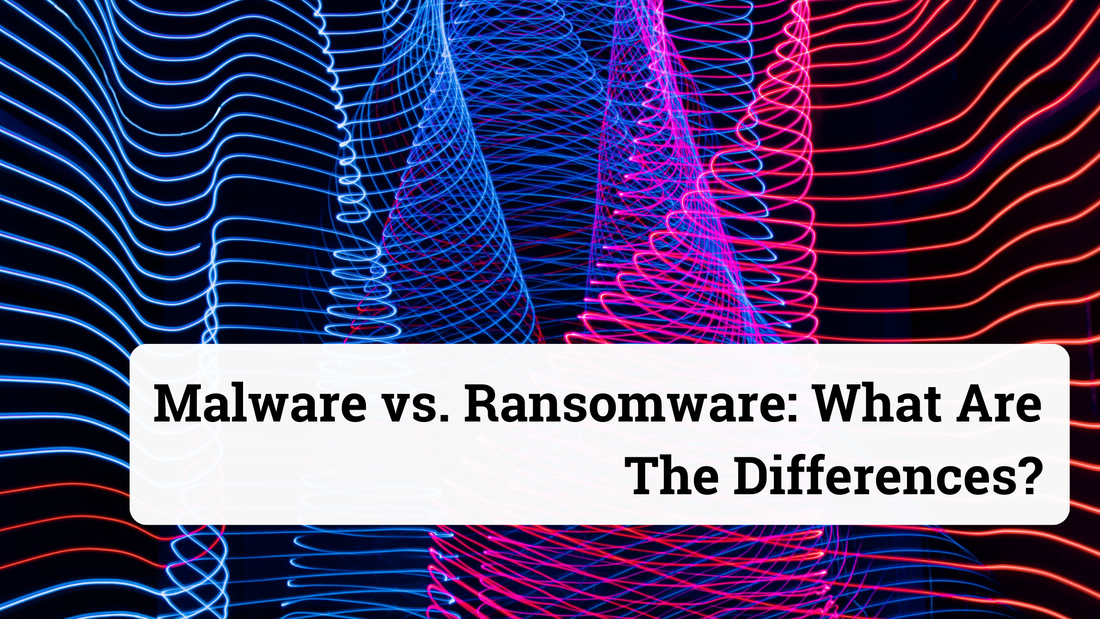|
In the digital landscape of cybersecurity, 2 common nefarious software tend to pop out the most - Malware and Ransomware. Both software are designed to infiltrate, infect, and wreak havoc on your digital life. In this article, we'll pull back the curtain on these digital adversaries, exploring what sets them apart and why they're such a significant threat in today's interconnected world.
Unmasking Malware: The Sneaky Saboteur Malware, a portmanteau of malicious software, is a software designed to achieve malicious purposes on an infected computer. Essentially, it is a broad term encompassing various types of unwanted software designed to infiltrate or damage your system without your consent. It includes adware, cryptominers, botnets, ransomware, infostealers, mobile malware, trojans, viruses, worms, wipers, and more. These different types of malware are designed differently depending on their goals. For example, malware designed to serve unwanted advertisements is vastly different from ransomware, which encrypts files on infected systems. Although, these malware variants do use many of the same techniques to achieve their different goals. Malware can stealthily enter your system through email attachments, infected websites, or software downloads, often exploiting vulnerabilities in outdated software and human vulnerabilities. Malware's motives range from simply causing chaos to stealing sensitive information like passwords or financial data. Some disguise themselves as legitimate programs, lurking in the background and siphoning off your data, while others might bombard you with unwanted ads or even encrypt your files like ransomware. Ransomware: The Digital Kidnapper Ransomware is a specific type of malware that takes digital extortion to a whole new level. Essentially, all ransomware is malware, but not all malware is ransomware. The goal of ransomware is to deny the victim access to their files via encryption, and demand a ransom in exchange for the decryption key, which restores access. Once ransomware gains access to a computer, it will work its way through the filesystem, checking the types of files found. If a file matches the built-in list of file extensions, the malware will encrypt the file data, and will replace the original data with the encrypted version, and wipe any record of the original in the system. Many ransomware variants will also work to spread beyond the initial target. This allows cybercriminals to infect a greater number of systems, access higher-value systems, and increase their ransom demand. After the ransomware completes the encryption process, a ransom demand will be presented to the users - either pay the ransom within a specified time or risk losing their files forever. If the user pays the ransom demand, the cybercriminal will give them the decryption key for their files. This key should allow the victim to be able to decrypt most or all of their files, hence restoring access. Recent years, there has been an alarming rise in ransomware attacks, impacting individuals, businesses, and even critical infrastructure. Attackers have refined their tactics, often employing phishing emails and social engineering to deceive victims into triggering the ransomware. Ransomware: It’s Evolution With Other Malware Ransomware has been evolving, whereby hybrids have been created with ransomware and other types of malware are being used together. Examples include:
Ransomware VS Malware: How They Differ The critical difference between malware and ransomware lies in their intent and impact. Malware has a broader agenda, from data theft to system disruption. It can be covert, stealthily spying on your activities, or overt, bombarding you with pop-ups and ads. On the other hand, ransomware has a singular, malicious goal: encrypting your data and demanding a ransom. It's a direct, in-your-face attack that leaves you with a chilling choice: pay or lose your valuable files. Protecting Your Digital Realm Against Malware The best way to protect against malware attacks is via prevention.
Takeaway In the ever-evolving digital landscape, understanding the distinctions between malware and ransomware is crucial for fortifying your defenses. Both are formidable foes, but with the right knowledge and security measures, you can tilt the odds in your favor. Stay vigilant, stay informed, and let your digital fortress stand strong against the relentless tide of cyber threats. Related Topics Ransomware - A Growing Problem & Best Practices For You and Your Company Ransomware Payments Skyrocket in 2023: The Unprecedented Surge and its Implications What Is A Ransomware Attack? How does it Work? & Best Practices What is Ransomware as a Service (RaaS)? Unmasking The Dark Side Of Cybercrime-as-a-Business Comments are closed.
|
Archives
June 2024
Categories
All
|
|
© 2021, TAFA HOLDINGS (S) PTE LTD. ALL RIGHTS RESERVED
|


 RSS Feed
RSS Feed